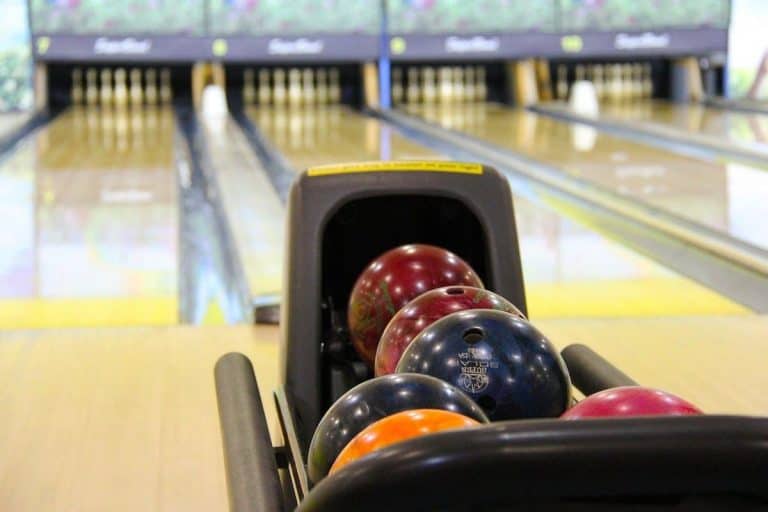Do Bowling Pins Wear Out and Break?
Professional bowling pin manufacturers make every effort to produce pins that are as durable as possible. However, they have to work within the standard guidelines set by the USBC (United States Bowling Congress). These guidelines do affect a regulation bowling pin’s durability.
Bowling pins do wear out with regular use and can break under extreme circumstances. The standard bowling pin used in a bowling alley lasts about 1-2 years. Beyond this, wear and tear alter the response to being struck by the ball and other pins. This results in unpredictable atypical movements after impact and could lower scores.
The quality and accuracy of bowling pins might not be relevant to the casual bowler, who only plays for enjoyment. However, they are of great importance to the more serious bowler, professional or not. This is why the USBC set regulations for bowling pins across the industry.
What Makes a Bowling Pin So Durable?
Bowling pins are crafted from a hardwood called maple. Hardwood is used to make furniture and is known for its durability. So why does a bowling pin only last a few years? USBC regulations dictate that bowling pins be a specific weight as I discuss in that post. To help regulate the weight, manufacturers drill holes through the center of the pins that can be filled in or left empty as needed; therefore, most pins are not 100% solid maple in their core.
A protective coating also adds to the durability of a bowling pin. Nylon is the most common coating used because it is light enough not to make the pin go over its allowed maximum weight, between 3 lbs 6oz and 3 lbs 10 oz (1.53 kg and 1.64 kg) for a ten-pin, the most common type of bowling pin.
A bowling pin will sustain knicks, scratches, and chips from the constant collisions with bowling balls and other pins. It would take a great force to break a maple bowling pin, such as the force exerted by a hydraulic press, a tool used for heavy-duty manufacturing.
Does the Type of Game Affect a Pin’s Lifespan?
There are a variety of different games that use bowling pins. All of them involve some impact to the pin, but because the object used to target the pins varies in each game, so does the amount of damage caused to the pin. The pins may also vary in size and shape, depending on the game.
Ten-pin Bowling
Ten-pin bowling, or what some might call ‘big-ball bowling,’ is the most common type. The pins are 4.75 in (121 mm) in width and 15 in (380 mm) in height. As previously mentioned, these pins weigh between 3 lbs 6oz and 3 lbs 10 oz (1.53 kg and 1.64 kg).
The ten-pin bowling balls vary in weight to allow bowlers of all sizes to find a suitable one. The maximum weight for a ten-pin ball, usually made of some type of heavy-duty resin or plastic, is 16 lbs (7.26 kg). That’s approximately 4.5 times the weight of one pin.
Five-pin Bowling
As you may have deduced from the name of the game, five-pin bowling uses five pins instead of ten. Most commonly played in Canada, the pins are about 75% of a ten-pin’s size and have rubber wrapped around the widest part of the pin to increase the chances that one pin will bounce off another.
Five-pin balls are usually made of rubber and can fit in the palm of an adult-sized hand. Both the rubber around the pins and the smaller size of the rubber bowling balls contribute to a longer lifespan for a five-pin versus a ten-pin.
Duckpin Bowling
Like with five-pin bowling, duckpin bowling uses smaller pins and balls. This game is regulated in the United States due to its popularity. The pins measure 9.4 in (23.3 cm) in height. Similar to five-pin balls, duckpin balls are made of rubber or similar material and measure no larger than 5 in for its diameter and 3 lbs 12 oz (1.7 kg) in weight.
There is another version of duckpin bowling called rubber-band duckpins. This version of the game features rubber around the pins, like those in five-pin bowling. The pins used in rubber-band duckpin bowling should last longer than those used in regular duckpin bowling.
Candlepin Bowling
You may or may not have heard of candlepin bowling because it is most popular in New England and parts of Canada. In this type of bowling, the pins are thinner, and the balls are smaller, making it more challenging to knock the pins down. Even so, candlepin bowling is the least physically challenging, so bowling enthusiasts of all ages can be played by bowling enthusiasts.
In candlepin bowling, the pins are 15.75 in (40 cm) in height and, per regulations, are 2 lbs 8 oz (1.1 kg) maximum in weight. The balls are just 4.5 in (11.43 cm) in diameter and weigh about the same as a single candlepin.
Bowling Pin Shooting
Bowling pin shooting does involve regulation ten-pin bowling pins but is not related to bowling. Instead of a bowling ball, the target-seekers are bullets. Surprisingly, standard bowling pins are highly resistant to bullets. For a bullet to penetrate the outer coating through to the maple center, it needs to be traveling faster than 700 fps (feet per second).
Or you can just use a bigger gun!
How to Extend the Life of a Bowling Pin
There are a couple of things you can do to renew life in a worn bowling pin. Worn bowling pins can affect the game’s quality because they may no longer be balanced due to minor damage. They might also not properly roll when toppled over, so they may not knock into other pins, leaving the bowler at a disadvantage.
Cleaning old bowling pins is allowed by the USBC. A bowling alley can lightly sand the surface of bowling pins to remove any dirt and grime as long as the pins remain in the range of regulation weight.
After sanding them down, the owner can also recoat old bowling pins. Again, this can only be done if the pin’s weight and size are still at regulation after the recoating is complete.
Bowling Questions is an Amazon Associate. As an Amazon Associate I earn from qualifying purchases. We maintain numberous other affiliate relationships. Using links on this site to purchase items from affiliate vendors does not increase cost for the buyer. You can read our complete legal information for more details.
Ideas for Upcycling Worn Bowling Pins
You can get worn out bowling pins from bowling alleys in many ways. Then you can try some of these craft projects.
There are many ways to repurpose old bowling pins for both practical and decorative purposes.
- Repaint the pins in fun colors. This is an easy way to give new life to old bowling pins by turning them into colorful new bowling sets for a child. A basic acrylic paint set, such as the GOTIDEAL Acrylic Paint Set (Amazon) is all you need.
- Create decorative shelf sitters. Again, using acrylic paint, you can transform worn bowling pins into something fun and decorative, such as Russian dolls or your favorite superheroes. A simple pattern, like florals or stripes, is another easy option.
- Add supports to floating shelves. Paint the pins a solid color and place them in between floating shelves for added support. Bowling pins painted black would look quite stylish with these Kosiehouse Floating Shelves (Amazon.) You would need to position the bowling pins as the shelves are hung from the bottom up to ensure the next shelf sits directly on top of the bowling pins. If you’re handy, you can even attach the pins to the shelves.
- Build your own unique coffee table. Get a premade tabletop, like this Flash Furniture 30″ Square High-Gloss Walnut Resin Table Top (Amazon) and attach four painted bowling pins as legs to create a useful table and conversation piece.
Final Thoughts
Bowling pins, specifically ten-pins, wear out after 2 years of daily use in your average bowling alley. A bowling pin’s longevity depends on what kind of pin it is and which game it’s used for. You can do things to prolong the life of a bowling pin, but the final results need to comply with the USBC specifications. Continuing to use worn-out bowling pins will affect the pins’ performance and accuracy, so why not upcycle them instead.







